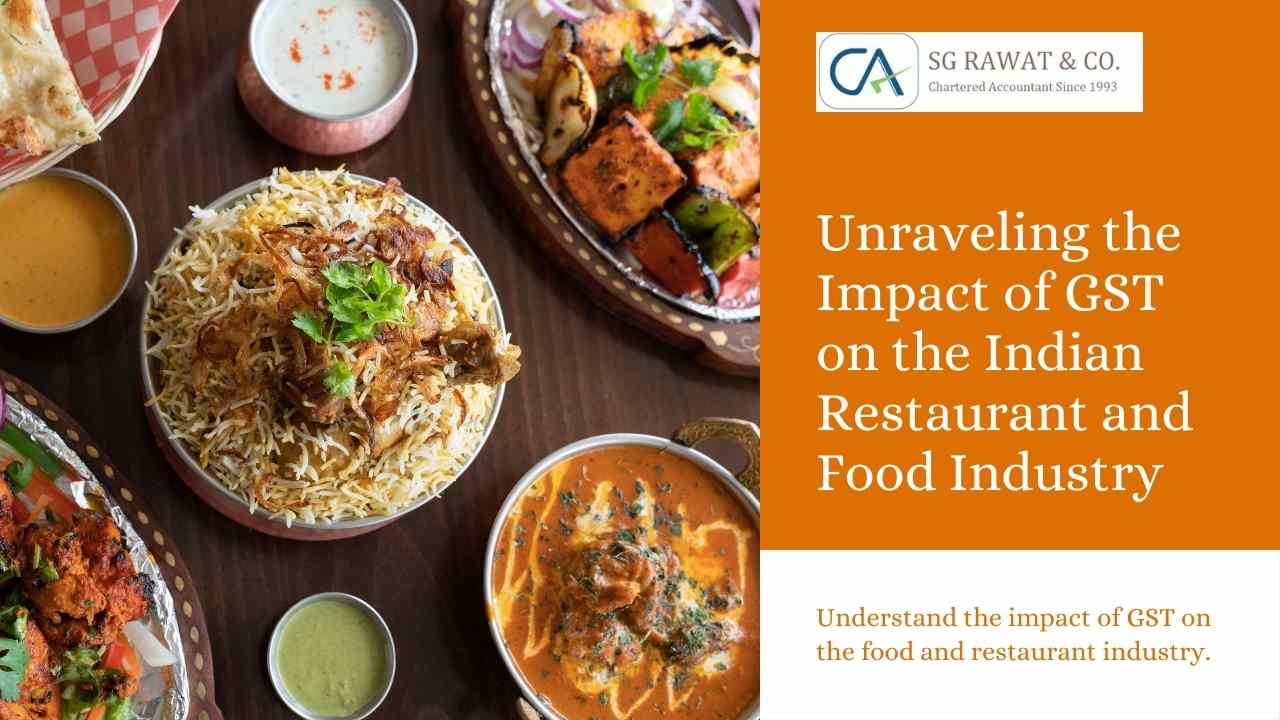Unraveling the Impact of GST on the Indian Restaurant and Food Industry

Introduction
The restaurant and food industry, a cherished aspect of our lives, has undergone significant changes due to the implementation of the Goods and Services Tax (GST). In this detailed analysis, we will delve into the intricate aspects of GST on food items, restaurants, and the implications it has on consumers, owners, and the industry at large.
Growth of the Indian Food Service Industry
The Indian food service industry has witnessed substantial growth, propelled by factors such as rapid urbanization, the rise of the middle class, and changing lifestyles. According to the National Restaurant Association of India’s 2019 report, the industry’s size was INR 1,48,353 crore in 2018-19, and it is projected to reach INR 2,57,907 crore in 2022-2023, exhibiting a Compound Annual Growth Rate (CAGR) of 15%.
Understanding Pre-GST and Post-GST Restaurant Bills
Before the GST era, restaurant bills included components like VAT (tax on food), service tax (on services provided), and service charge (applied by restaurants). However, GST introduced a unified tax structure, simplifying the billing process. Restaurants now fall under two categories: 5% GST without Input Tax Credit (ITC) for standalone restaurants and 18% GST with ITC for restaurants within hotels with room tariffs exceeding a specified amount.
Decoding GST Rates on Food Items
GST rates on various food items vary, with some items being exempt from GST (e.g., fresh fruits and vegetables). Notably, fresh and chilled vegetables, frozen vegetables, and certain leguminous vegetables have a Nil GST rate. However, items like chocolates and cocoa products are taxed at 18%.
Impact on Restaurant Business Owners and Consumers
For restaurant owners, GST has streamlined taxation, merging Service Tax and VAT into a single rate. A comparative analysis reveals reduced tax liabilities for both consumers and owners under the GST regime. This has led to enhanced working capital for restaurant owners, fostering a positive environment for the industry’s growth.
Frequently Asked Questions (FAQs)
What is the highest rate of GST that is applicable on the food segment?
The highest rate of GST applicable in the food segment is 28%, which is applicable to certain goods such as caffeinated and carbonated beverages.
Are there any food items with nil charge of GST?
Yes, there are food items such as fresh fruits, fresh vegetables, meat, fish, etc. that fall under the Nil rate of GST. You can refer to the table above or to our article here. Our GST Rate and HSN Code finder will also help you find the GST rate on any food item easily.
What is the rate of GST applicable on chocolate and cocoa products?
The GST rate on chocolates and cocoa products is 18%.
Is there GST on takeaway food?
Yes, there is GST applicable on takeaway food. The rate is 5% or 18%, depending on the location of the restaurant.
- Highest GST Rate on Food Segment: The highest GST rate applicable in the food segment is 28%, primarily on goods like caffeinated and carbonated beverages.
- Food Items with Nil GST: Several food items, including fresh fruits, fresh vegetables, meat, and fish, fall under the Nil GST category, promoting affordability and accessibility.
- GST on Chocolate and Cocoa Products: Chocolates and cocoa products are taxed at 18% GST, contributing to government revenue while maintaining consumer demand.
- GST on Takeaway Food: Takeaway food is subject to GST at either 5% or 18%, depending on the restaurant’s location, ensuring consistency in tax application.
Conclusion
The implementation of GST in the restaurant and food industry has ushered in a new era of simplified taxation, benefiting both consumers and owners. With reduced tax liabilities, enhanced working capital, and streamlined billing processes, the industry is poised for further growth. As consumers, we can explore a plethora of dining options with the assurance of a standardized tax structure, ultimately enhancing our culinary experiences.

